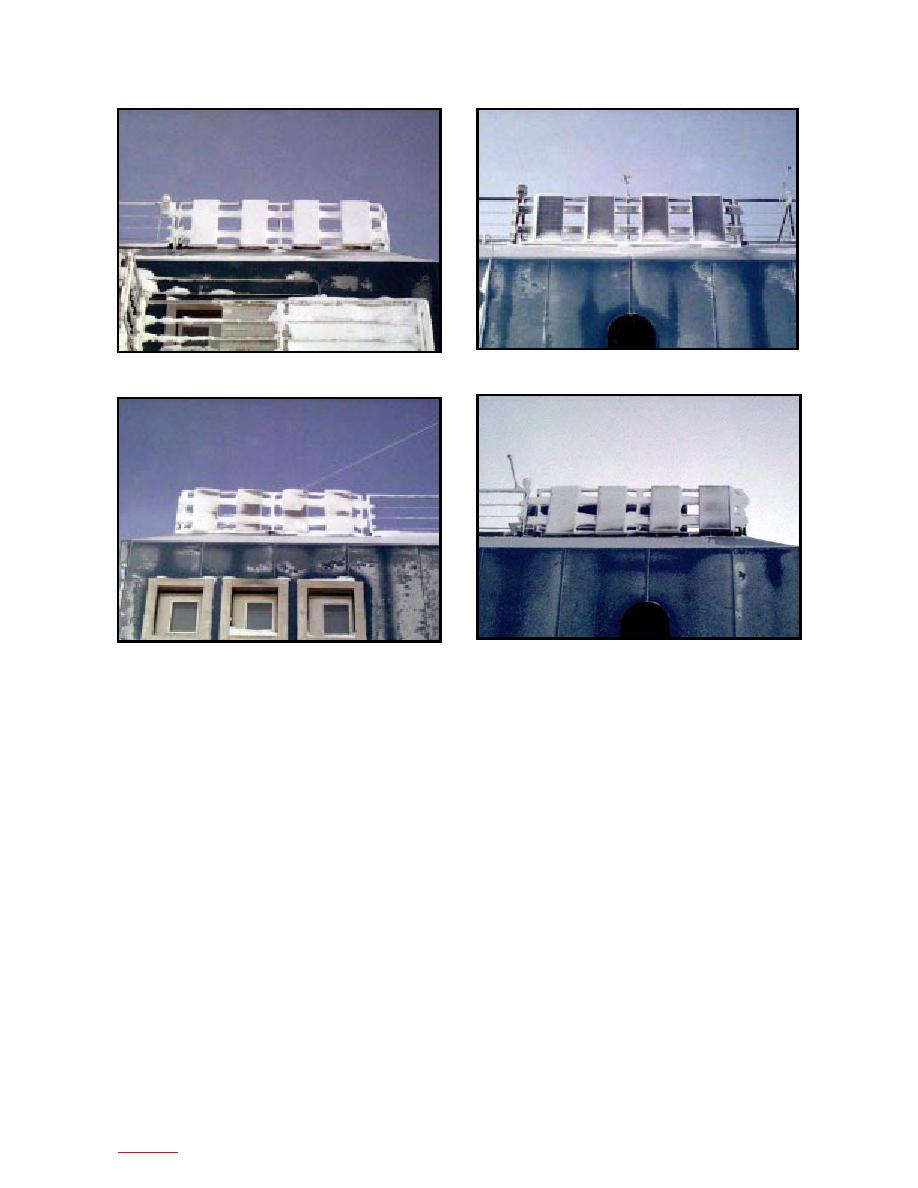
c. North Side.
a. South side.
d. West side.
b. East side.
Figure 16. Conditions at ARO on 22 September 1998.
cal performance ratings were based on the data recorded
KYOCERA
There was no noticeable structural degradation of
during the 24-hour period of PV panel performance on
the PV module or aluminum frame.
a high visibility day. The construction rating was based
on general observations and the data recorded from the
PV panel flex test.
PhotoComm, Inc.
There was no noticeable structural degradation of
the PV module or aluminum frame.
CONCLUSION
The PV panels were installed on the ARO building
ASE Americas
The color of the foil backing behind the crystalline
at the South Pole station for a total of 410 days. During
silicon cells changed from a gray to a light brown. Other
that time, the panels were exposed to varying amounts
than the discoloration of the foil backing, there was no
of inclement weather. Temperatures ranged from a low
of 70 to a high of 20C, with average wind speeds of
noticeable structural degradation of the PV module or
aluminum frame.
approximately 5 m/s, gusting to 20 m/s. Prior to
removal, each PV panel was inspected to see if the harsh
environment degraded the structural characteristics of
Solarex
There was no noticeable structural degradation of
the panel frame, glazing, panel backing, and junction
the PV module or aluminum frame.
box. The inspection showed that the PV panels had not
The electrical performance and construction ratings
noticeably degraded during the 410-day exposure.
in Table 7 have been assigned a range from one to four,
The electrical performance of the PV panels depended
one being the highest and four the lowest. The electri-
on two factors: sun angle and visibility. As expected, the
11
to contents



 Previous Page
Previous Page
